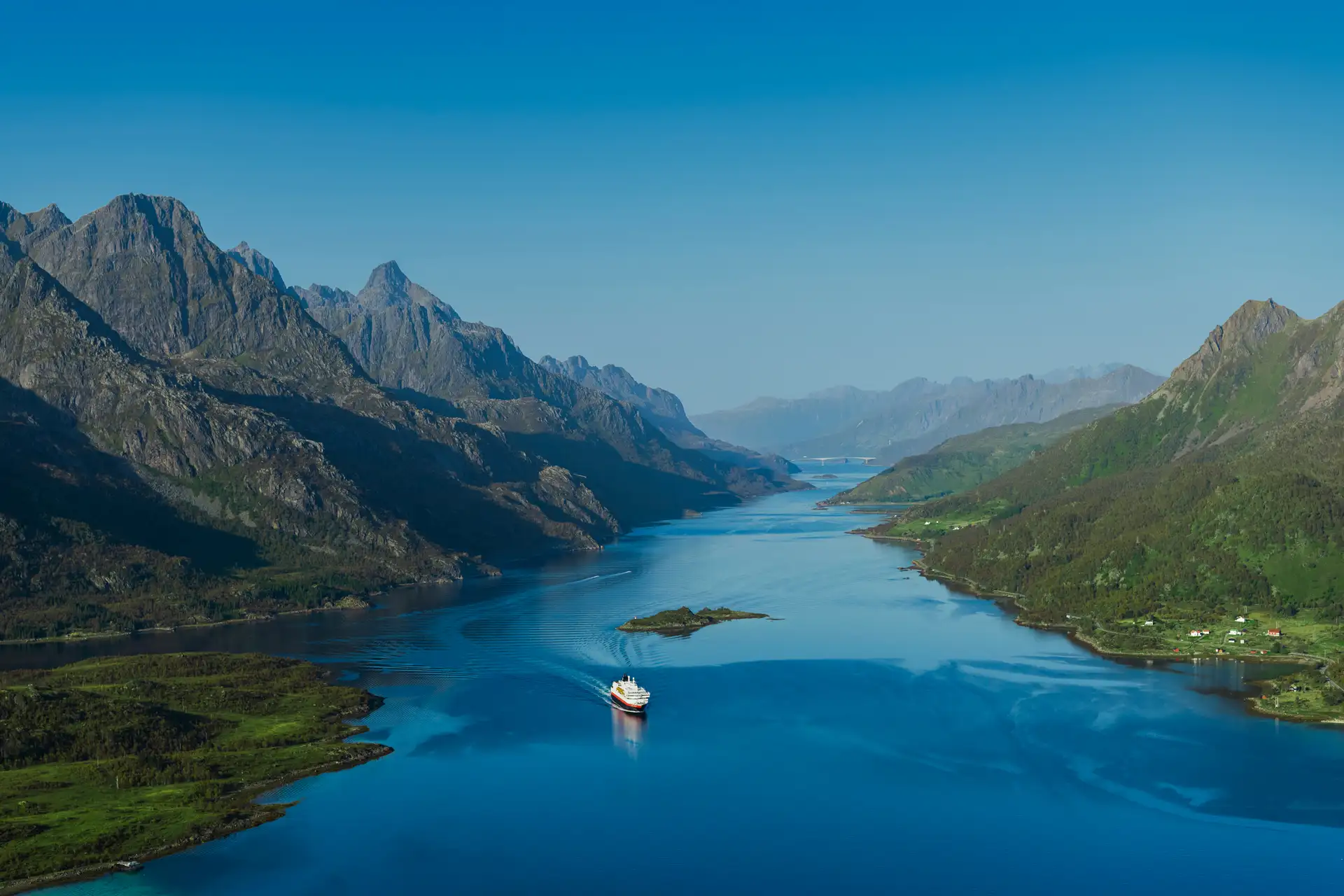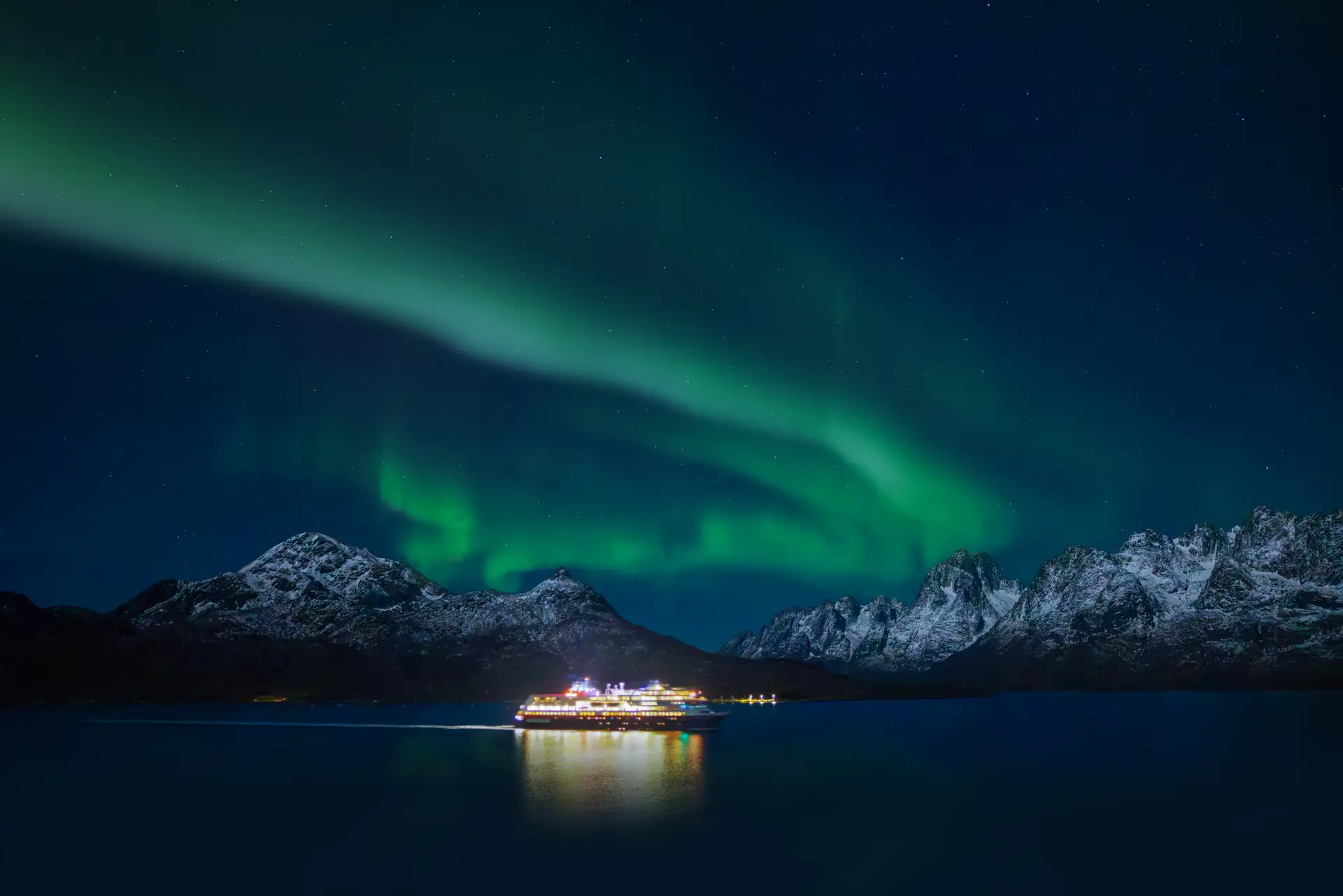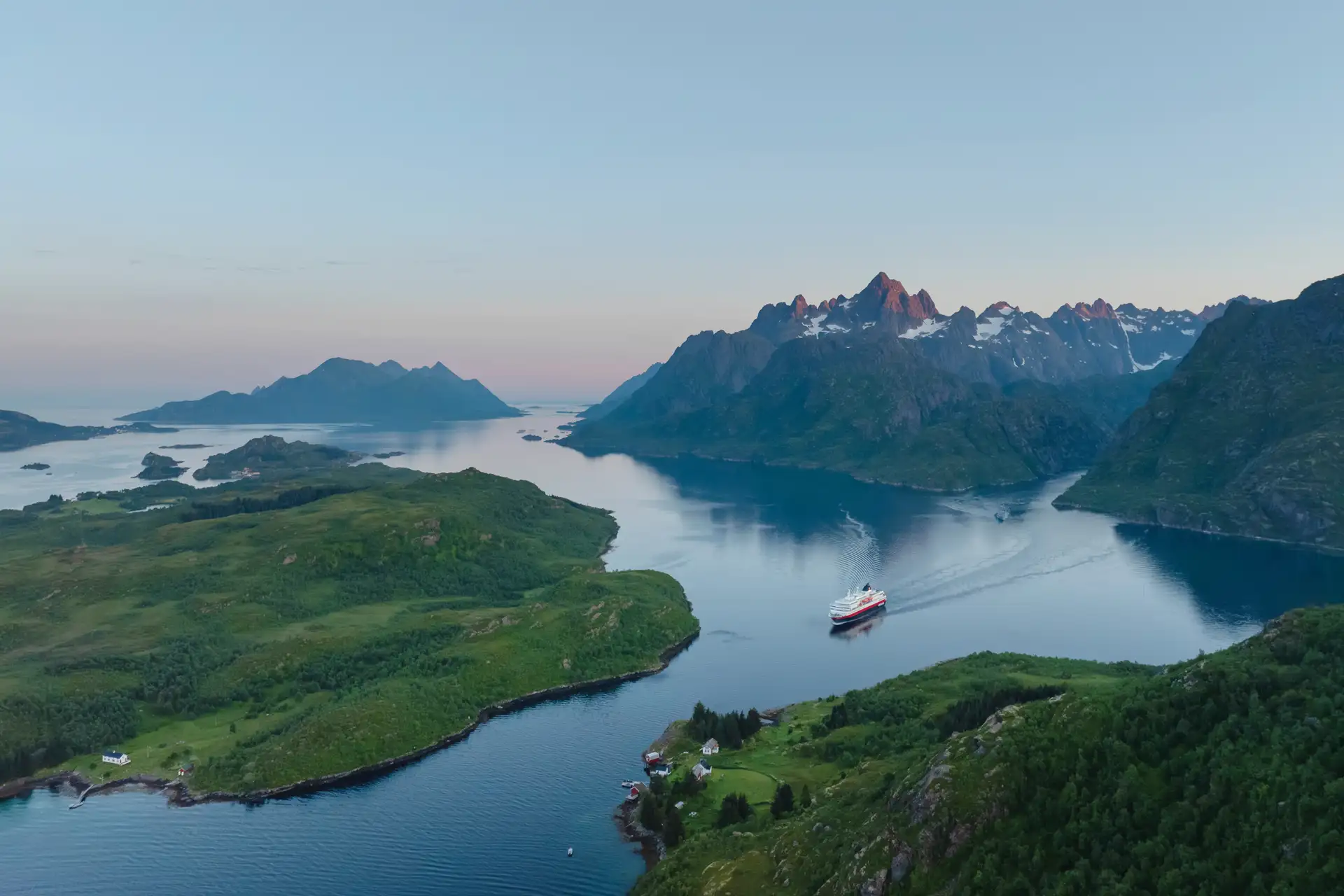Vardø – seabirds and witch hunts at Norway’s wild eastern edge
At the easternmost reach of Norway, Vardø is a place of witch trial history, Arctic winds and unforgettable birdwatching on nearby Hornøya island.

Colourful Vardø is Norway’s easternmost town and the farthest east you’ll sail on this voyage. The town fans out from the heart of the almost butterfly-shaped Vardøya island, which hovers between the edges of the Varanger peninsula, the Barents Sea and Russia’s northern shores.
It’s best known for its blustery, Arctic weather, lively coastal culture and proximity to noisy, spectacular seabird colonies.
Vardø: haunted by history, alive with nature
Locals are used to the fierce winds that sweep Vardø’s streets. It’s said children once carried rocks in their pockets to stop them being blown away. Despite, or perhaps because of, its Arctic climate, Vardø today hosts a wide range of festivals – including a snowball festival – and is a magnet for birdwatchers.
The wider Varanger peninsula is a bird-lover’s paradise but the tiny island of Hornøya, just off Vardøya’s northeast coast, is one of the jewels in its crown. Topped by a red-and-white lighthouse, Hornøya is both the northeasternmost point in all of Norway (bar the outlying island of Kvitøya far to the north in Svalbard) and the easternmost protected nature reserve in Norway. It’s home to 80,000 seabirds including Razorbills, Common Guillemots and about 7,800 pairs of Atlantic Puffins who nest here each spring.
Vardø past is just as worth visiting. Vardøhus Fortress, on the western ‘wing’ of Vardøya, is the world’s northernmost fortress. Its current star-shaped form, built in 1737, replaced older fortifications on the same site dating back to 1306.
But the town is perhaps most remembered as the centre of a witch-hunt frenzy. Between 1600 and 1692, around 91 people were accused of witchcraft and killed here in brutal trials. The Steilneset Memorial honours these victims with a haunting sculpture by artist Louise Bourgeois and building by architect Peter Zumthor. You can see it on the western side of Vardø, near the fortress.
Vardø’s story doesn’t end there. In the 1800s, it flourished as a hub for Pomor trade with Russia. And in 1893, explorer Fridtjof Nansen departed from here aboard Fram to attempt to reach the geographical North Pole. Look out for his statue in town.
What is the weather like in Vardø?
| Month | Jan | Feb | Mar | Apr | May | Jun | Jul | Aug | Sep | Oct | Nov | Dec |
|---|---|---|---|---|---|---|---|---|---|---|---|---|
Average temp °C (max) | -2 | -2 | -1 | 2 | 5 | 9 | 12 | 12 | 9 | 5 | 1 | -1 |
Average temp °C (min) | -7 | -7 | -5 | -2 | 1 | 5 | 8 | 8 | 5 | 1 | -3 | -5 |
As seen from the sea
Whether northbound or southbound, we sail into Vardø’s harbour, tucked between the two sides of Vardøya, from the north. The town spreads around the harbour with low hills to either side. It’s easy to spot the nearby Hornøya and Reinøya islands to the east.
Port address: Kaikaga 26 A, 9950 Vardø



